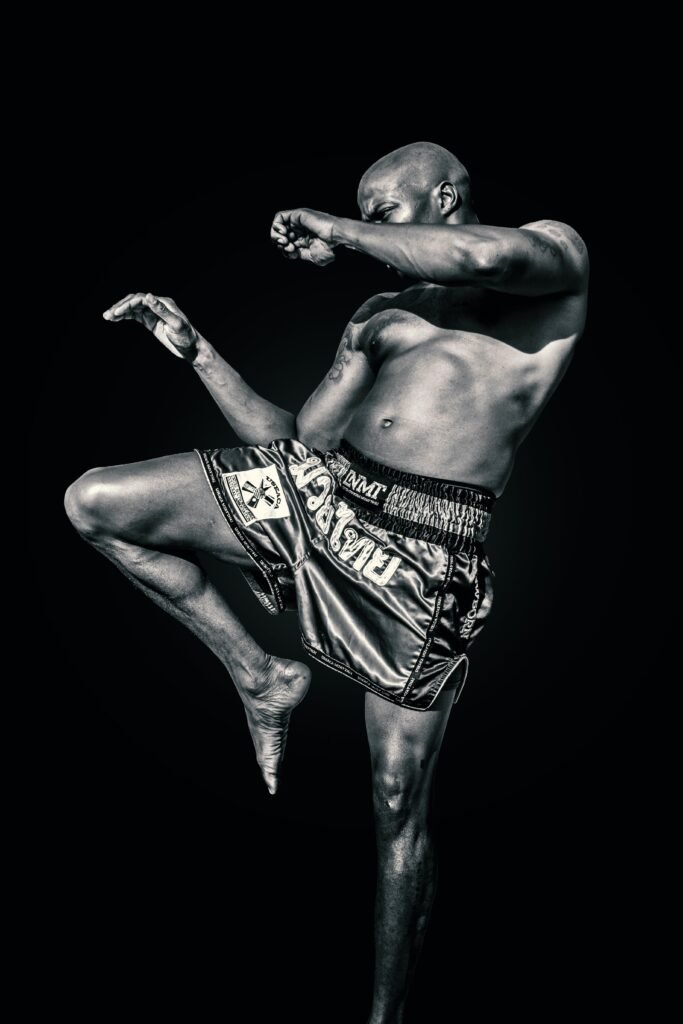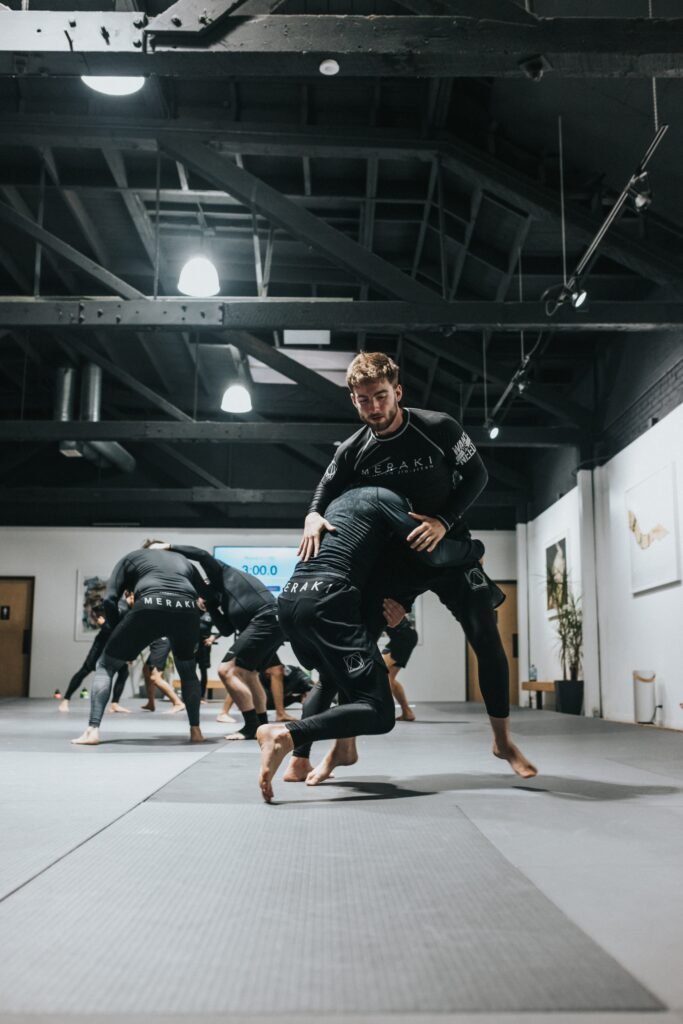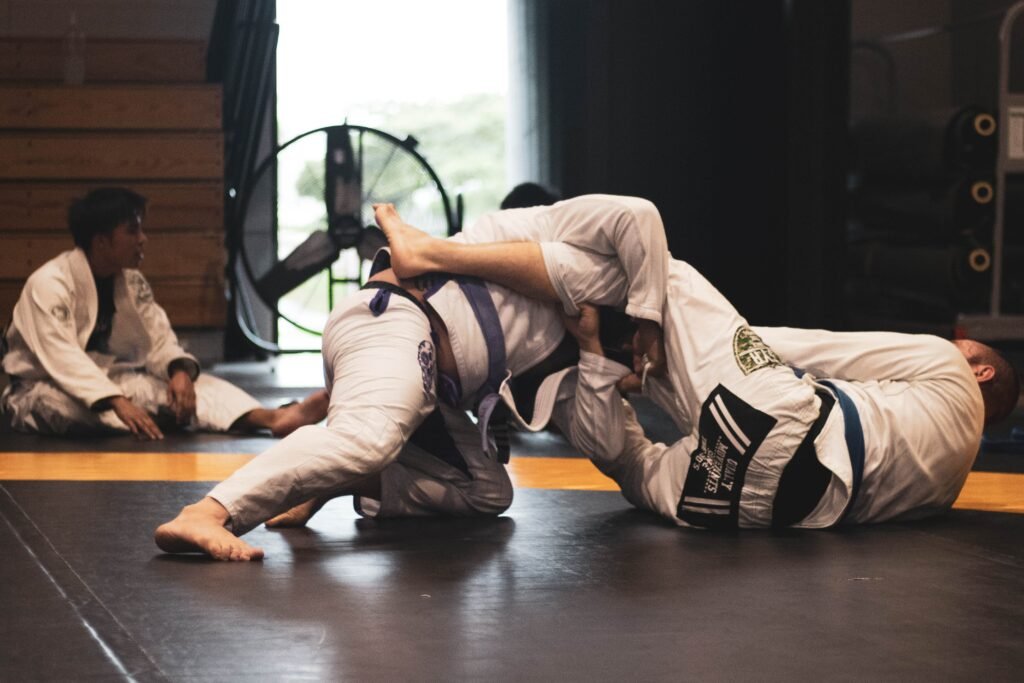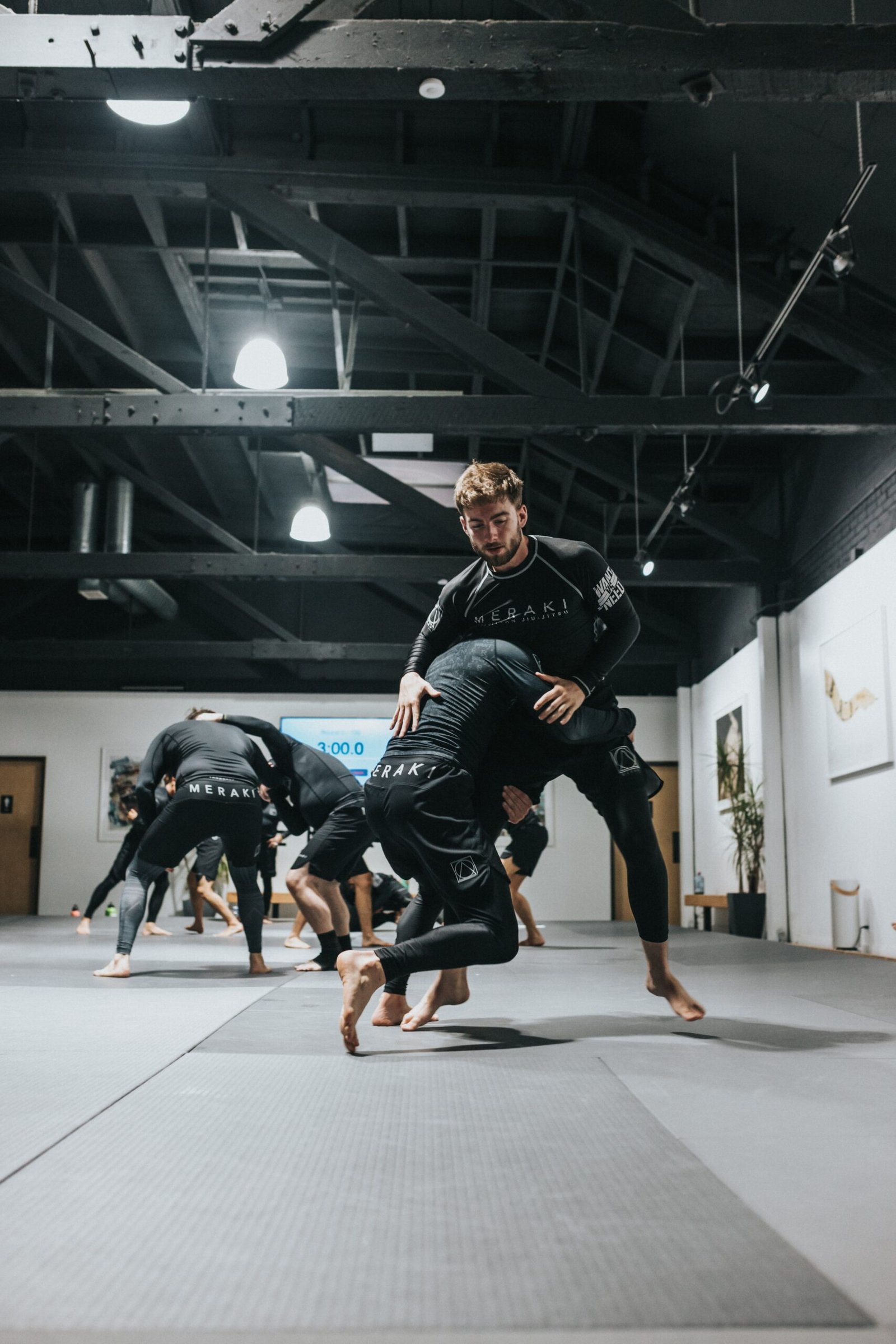In the vast world of martial arts, the sheer variety of styles and techniques can be both exciting and overwhelming. From the ancient discipline of Kung Fu to the high-energy kicks of Taekwondo, the options seem endless. As you explore the realm of martial arts, you may find yourself wondering just how many types there are. Thankfully, this article aims to shed light on this very question, providing you with a glimpse into the diverse tapestry of martial arts and their rich histories. So, step into the world of martial arts and let's uncover the countless paths that await your discovery.
Types of Martial Arts
Martial arts are a diverse and ancient practice that has been passed down for generations. With a rich history and cultural significance, martial arts offer both physical and mental benefits to practitioners. There are numerous types of martial arts, each originating from different regions of the world and having their own unique techniques and philosophies. In this article, we will explore some of the most popular and influential martial arts styles from various countries.

Japanese Martial Arts
Japanese martial arts have a long and storied history, deeply rooted in the country's culture and traditions. These martial arts emphasize discipline, respect, and self-control. Here are some notable Japanese martial arts:
Karate
Karate, meaning "empty hand," is one of the most well-known Japanese martial arts. It focuses on strikes, kicks, and various forms of hand techniques. Practitioners of karate not only develop physical strength and coordination but also cultivate a strong sense of discipline and self-confidence.
Judo
Judo, which means "gentle way," is a martial art that originated in Japan and is now recognized as an Olympic sport. Judo emphasizes using an opponent's strength and momentum against them through throws and grappling techniques. It is a great martial art for developing both physical agility and mental focus.
Aikido
Aikido, translated as "the way of harmony with the spirit," is a martial art that focuses on redirecting an opponent's energy rather than using brute force. Practitioners of Aikido learn to blend with and neutralize an attacker's movements using throws and joint locks. This martial art places a strong emphasis on personal growth and cultivating a peaceful mindset.
Kendo
Kendo, also known as Japanese fencing, is a martial art that involves the use of bamboo swords and protective armor. It emphasizes discipline and respect while honing one's swordsmanship skills. Kendo practitioners engage in intense training and spar with each other to improve their technique and mental focus.
Iaido
Iaido is the art of drawing and using a sword in one fluid motion. It focuses on precision, control, and mindfulness. Iaido practitioners perform a series of solo techniques, known as katas, to develop a deeper understanding of the sword and cultivate mental clarity.
Kyudo
Kyudo, the way of the bow, is a traditional Japanese martial art that emphasizes the use of the asymmetrical longbow, known as the yumi. Practitioners of Kyudo learn to shoot with precision and concentration, and this art form promotes mindfulness and inner peace.
Ninjutsu
Ninjutsu, often associated with the mysterious ninjas of ancient Japan, is the art of stealth, espionage, and unconventional warfare. It encompasses a wide range of skills including disguise, concealment, evasion, and combat techniques. Practitioners of ninjutsu learn to adapt to various situations and employ unconventional strategies.
Chinese Martial Arts
Chinese martial arts, known as Kung Fu, have a rich history that dates back thousands of years. These martial arts emphasize fluidity, flexibility, and the harmonization of mind and body. Here are some well-known Chinese martial arts:
Kung Fu
Kung Fu is a general term that encompasses a wide range of Chinese martial arts styles. It is characterized by its intricate movements, acrobatic kicks, and diverse techniques. Kung Fu practitioners undergo rigorous training to develop physical strength, agility, and mental discipline.
Tai Chi
Tai Chi, also known as Tai Chi Chuan, is a martial art that focuses on slow, flowing movements and deep breathing. It is often practiced for its health benefits and its ability to promote relaxation and reduce stress. The gentle, graceful movements of Tai Chi help improve balance, flexibility, and overall well-being.
Wing Chun
Wing Chun is a Chinese martial art that emphasizes close-range combat and quick, efficient techniques. It is known for its simplicity and directness, making it suitable for practitioners of all ages and body types. Wing Chun trains practitioners to develop speed, precision, and sensitivity in their movements.
Shaolin Kung Fu
Shaolin Kung Fu is a renowned Chinese martial art that originated from the Shaolin Monastery in Henan Province. It incorporates a wide range of striking, kicking, and grappling techniques. Shaolin Kung Fu embodies the philosophy of Chan Buddhism, focusing on discipline, self-cultivation, and the attainment of spiritual enlightenment.
Baguazhang
Baguazhang, also known as Eight Trigram Palm, is a Chinese martial art that emphasizes circular footwork and evasive maneuvers. Practitioners of Baguazhang learn to move in continuous, flowing patterns while executing strikes, kicks, and joint locks. This martial art is renowned for its internal energy cultivation and its effectiveness in close-quarters combat.
Xingyiquan
Xingyiquan, meaning "form-intention boxing," is a Chinese martial art that emphasizes explosive power and direct, linear movements. It draws inspiration from the five elements of Chinese philosophy and focuses on imitating the movements of animals. Xingyiquan is known for its practicality and the cultivation of internal strength.
Wushu
Wushu is a modern Chinese martial art that combines elements of traditional Chinese martial arts with acrobatics and performance. It is often showcased in elaborate routines and competitions. Wushu incorporates a wide range of techniques, including kicks, punches, and weapons. Along with its artistic value, Wushu promotes physical fitness, discipline, and mental focus.
Korean Martial Arts
Korean martial arts, also known as "muye," have a long history and cultural significance in Korea. These martial arts focus on discipline, respect, and self-improvement. Here are some prominent Korean martial arts:
Taekwondo
Taekwondo, the most well-known Korean martial art, is characterized by its dynamic, high-flying kicks and fast, precise strikes. Taekwondo training emphasizes speed, flexibility, and agility. It is not only a martial art but also a competitive sport, with its inclusion in the Olympic Games.
Hapkido
Hapkido, translated as "the way of coordinated power," is a Korean martial art that focuses on joint locks, throws, and pressure point strikes. It incorporates elements of both hard and soft techniques, making it versatile and effective for self-defense. Hapkido training also emphasizes a holistic approach to personal development and self-awareness.
Kumdo
Kumdo, also known as Korean swordsmanship, is the Korean equivalent of Japanese Kendo. Practitioners of Kumdo learn the use of traditional Korean swords, called "geom," in both solo and sparring practices. Kumdo emphasizes discipline, respect, and the cultivation of mental focus.
Hwa Rang Do
Hwa Rang Do, meaning "the way of the flower of youth," is a Korean martial art that combines combat techniques with philosophy and moral principles. It incorporates a wide range of strikes, joint locks, throws, and acrobatic movements. Hwa Rang Do places a strong emphasis on personal growth, self-cultivation, and adherence to ethical standards.
Tang Soo Do
Tang Soo Do is a Korean martial art that combines elements of traditional Korean martial arts, Chinese martial arts, and Japanese karate. It emphasizes discipline, self-control, and the development of physical and mental strength. Tang Soo Do training includes forms, sparring, and self-defense techniques.
Brazilian Martial Arts
Brazilian martial arts are renowned for their effectiveness in real-life combat situations. These martial arts integrate elements of self-defense, dance, acrobatics, and cultural expression. Here are some notable Brazilian martial arts:
Brazilian Jiu-Jitsu
Brazilian Jiu-Jitsu (BJJ) is a martial art and combat sport that focuses on ground fighting and submission holds. BJJ emphasizes leverage and technique over size and strength, making it suitable for practitioners of all ages and body types. It is known for its effectiveness in grappling and self-defense situations.
Capoeira
Capoeira is a Brazilian martial art that combines elements of dance, acrobatics, and music. It is characterized by its fluid and rhythmic movements, often performed to the rhythm of traditional African instruments. Capoeira is not only a martial art but also a cultural expression and a form of social integration.
Luta Livre
Luta Livre, which means "free fighting," is a Brazilian martial art that focuses on ground fighting and submission holds. Similar to Brazilian Jiu-Jitsu, Luta Livre emphasizes technique and quick transitions between positions. It is popular for its effectiveness in mixed martial arts competitions.
Vale Tudo
Vale Tudo, meaning "anything goes," is a Brazilian combat sport that allows a wide range of techniques, including striking, grappling, and submissions. It is considered one of the precursors to modern mixed martial arts (MMA). Vale Tudo competitions have minimal rules, making them intense and unpredictable.

Thai Martial Arts
Thai martial arts, also known as "muay," have a long-standing tradition and cultural significance in Thailand. These martial arts place a strong emphasis on striking techniques and physical conditioning. Here are some renowned Thai martial arts:
Muay Thai
Muay Thai, also known as Thai boxing, is the national sport and martial art of Thailand. Known as the "Art of Eight Limbs," Muay Thai utilizes punches, kicks, elbows, and knee strikes. It is known for its high-energy, full-contact fights and its effectiveness in practical self-defense.
Krabi Krabong
Krabi Krabong is a traditional Thai martial art that focuses on weaponry, namely the staff and the sword. Practitioners of Krabi Krabong learn various techniques for striking, blocking, and disarming opponents using these weapons. This martial art also includes empty-hand combat techniques.
Filipino Martial Arts
Filipino martial arts encompass a variety of systems and styles, often collectively referred to as "Arnis/Escrima/Kali." These martial arts emphasize weapon-based fighting, as well as empty-hand techniques. Here are some popular Filipino martial arts:
Arnis
Arnis, also known as Eskrima or Kali, is the national martial art of the Philippines. It focuses on the use of sticks, knives, and other weapons. Arnis practitioners also learn empty-hand techniques incorporating strikes, kicks, and joint locks. It is known for its fluidity and versatility in both armed and unarmed combat.
Escrima
Escrima, a term often used interchangeably with Arnis and Kali, is a Filipino martial art that emphasizes weapon-based fighting. It is characterized by its use of rattan sticks, known as "escrimas." Escrima practitioners learn various techniques for striking, blocking, and disarming opponents, developing both skill and coordination.
Kali
Kali, another term for Filipino martial arts, encompasses various styles and systems. It includes both armed and unarmed combat techniques, with a strong emphasis on practicality and adaptability. Kali is known for its intricate footwork, intricate flow drills, and effective self-defense techniques.
Panantukan
Panantukan, also known as Filipino boxing or Filipino dirty boxing, is a Filipino martial art that focuses on close-quarters combat and striking techniques. It incorporates punches, elbows, knees, and kicks, with an emphasis on targeting vulnerable areas. Panantukan is known for its practicality and effectiveness in real-life self-defense situations.

Indian Martial Arts
Indian martial arts, often referred to as "kalari," have a long and ancient history. These martial arts combine physical techniques with meditation, breathing exercises, and philosophical teachings. Here are some notable Indian martial arts:
Kalaripayattu
Kalaripayattu is an ancient Indian martial art that predates many other martial arts systems. It incorporates striking, kicking, grappling, and weaponry techniques. Kalaripayattu also emphasizes flexibility, stamina, and the internal energy system known as "prana." It is considered both a martial art and a holistic system of well-being.
Silambam
Silambam is a traditional Indian martial art that focuses on the use of a staff, known as a "lathi" or "silambam." Practitioners of Silambam learn various techniques for striking, blocking, and spinning the staff. This martial art also includes empty-hand combat techniques and intricate footwork.
Musti Yuddha
Musti Yuddha, also referred to as Malla-yuddha, is a traditional Indian martial art that incorporates both striking and grappling techniques. It dates back thousands of years and is considered one of the earliest recorded martial arts. Musti Yuddha focuses on using the fists and feet for striking, as well as throws, joint locks, and pressure point manipulation for grappling.
Russian Martial Arts
Russian martial arts, known as "boris," have a strong emphasis on practical self-defense and street fighting. These martial arts combine elements of striking, grappling, and weapon use. Here are some notable Russian martial arts:
Sambo
Sambo, short for "SAMozashchita Bez Oruzhiya," meaning "self-defense without weapons," is a Russian martial art and combat sport. It combines elements of judo, wrestling, and striking techniques. Sambo focuses on efficient takedowns, ground fighting, and submission holds. It is known for its practicality and effectiveness in real-life combat situations.
Systema
Systema, translated as "the system," is a Russian martial art that focuses on self-defense, health, and personal development. It emphasizes fluidity of movement, breath control, and the development of relaxation under stressful conditions. Systema practitioners learn to adapt to a wide range of situations and develop both physical and mental resilience.
Kadochnikov System
The Kadochnikov System is a Russian martial art that emphasizes efficiency, adaptability, and the use of body mechanics. It incorporates elements of striking, grappling, and weapon use. The Kadochnikov System focuses on exploiting an opponent's weaknesses and using minimal effort for maximum effect.
Rossiiskaya Dukhovnaya Shkola Boevoi Podgotovki
The Rossiiskaya Dukhovnaya Shkola Boevoi Podgotovki, meaning "Russian Spiritual School of Combat Training," is a modern Russian martial art that integrates physical techniques with spiritual and philosophical principles. It includes elements of striking, grappling, weapon use, and self-defense. This martial art focuses on cultivating self-awareness, discipline, and personal growth.
Indonesian Martial Arts
Indonesian martial arts, also known collectively as "Pencak Silat," have a long-standing cultural heritage. These martial arts combine striking techniques, grappling, weapons training, and spiritual aspects. Here are some prominent Indonesian martial arts:
Pencak Silat
Pencak Silat is an umbrella term for various Indonesian martial arts styles. It encompasses a wide range of techniques, including strikes, kicks, throws, joint locks, and weapon use. Pencak Silat is known for its fluidity, intricate footwork, and the integration of artistic elements. It is not only a martial art but also a cultural expression.
African Martial Arts
African martial arts encompass a variety of traditional fighting styles found across the continent. These martial arts emphasize strength, agility, and self-defense techniques. Here are some notable African martial arts:
Nguni Stick Fighting
Nguni Stick Fighting, also known as Nguni Stick Endurance Stick Fighting, is a traditional martial art practiced by several ethnic groups in Southern Africa. It involves using long sticks as weapons and combines striking, blocking, and evasion techniques. Nguni Stick Fighting is both a martial art and a cultural practice, often performed during ceremonies and rituals.
Dambe
Dambe is a traditional West African martial art that originated among the Hausa people in Nigeria. It is a form of boxing characterized by its one-armed technique, with the stronger arm wrapped in a heavy cloth. Dambe fighters engage in matches that combine strikes, kicks, and grappling in a renewed display of strength and skill.
Lutte Traditionnelle
Lutte Traditionnelle is a traditional Senegalese form of wrestling that has gained popularity throughout West Africa. It involves both striking and grappling techniques, with athletes competing in a sandy arena wearing traditional clothing. Lutte Traditionnelle is not only a sport but also a highly respected cultural tradition, often accompanied by music, dance, and elaborate rituals.
In conclusion, the world of martial arts is incredibly vast and diverse, with numerous styles originating from various countries and cultures. Each type of martial art offers its own unique benefits and insights into self-defense, physical fitness, and personal development. Whether you are drawn to the discipline and precision of Japanese martial arts, the acrobatics and cultural expressions of Brazilian martial arts, or the practicality and adaptability of Russian martial arts, there is a style out there that suits your interests and goals. So, whether you are a novice or an experienced practitioner, it's never too late to explore the world of martial arts and discover the art form that resonates with you.





